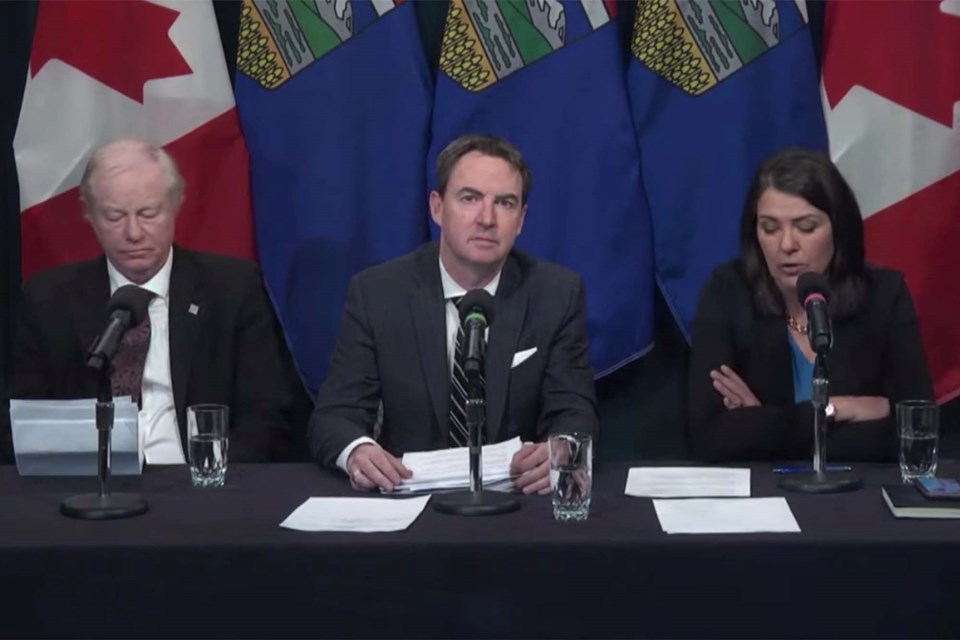Orissa Shima president for the Sturgeon Community Hospital United Nurses Association said she has been hearing significant concerns from emergency department staff on a daily basis.
“Shifts that are utterly exhausting. Our wait times are significant across the province, and we are no different. Most nurses will tell you they’ve never seen it this bad,” she told the Gazette.
To address issues hospitals across the province are facing with regards including wait times in emergency Premier Danielle Smith along with Health Minister Jason Copping recently announced they had hired Dr. John Cowell as a full-time administer to replace the existing part-time Alberta Health Services (AHS) board of directors.
Cowell, who came out of retirement for the position, has been hired on to look at, what Smith has called four urgent needs. Those needs include improving EMS response times, decreasing emergency room wait times, reducing the wait times for surgeries and to also “develop long term reforms through the consultation with frontline workers.”
“Dr. Cowell brings a wealth of experience to the position including a previous role as the official administrator of Alberta Health Services.
“He can accelerate the changes that we all need to see. He is familiar with Alberta's health care system. He knows that we can do better, and I have every confidence in his ability to deliver meaningful reform for Albertans,” said Smith during a Nov. 17, press conference.
According to a press statement Cowell will be able to drive change faster than the AHS governance model.
Copping said the role provides a dedicated full-time focus to issues instead of a part time strategic board and responses can be immediate and dynamic.
“I would like to stress that this is a temporary fix to help drive immediate changes and that the board will be restored at the appropriate time,” said Copping.
When it comes to the emergency room department at the Sturgeon Community hospital, Shima doesn’t expect the administrator will make a difference.
“We’ve seen (firing the board) before. It just creates uncertainty and instability. What we need to do is retain our depleted workforce, address workloads, recruit more nurses, and invest in training more nurses,” she said.
Shima said the big issue facing hospitals is a lack of staffing, and hospitals do not have enough nurses to provide patients they care they need.
“Nurses are suffering from moral distress because they cannot provide the care they are trained to provide. Volumes are high. Acuity is high. We do not have enough hospital beds, so patients wait days in the ER,” she said.
Kristi Bland, communication officer for Alberta Health Services Edmonton Zone said the emergency department at Sturgeon Community Hospital is very busy.
“We are experiencing an early start to the respiratory illness season and a steep rise in the number of patients in emergency. We expect to see winter peak levels over the next few weeks,” she said.
In an email, she said the average wait time to see a physician at the Sturgeon emergency department is an hour longer than pre-pandemic wait times.
The estimated time to see a physician, on average, is 3.5 hours. In 2019 the average wait time in the emergency department was 2.25 hours.
Bland said the number of patients at the Sturgeon emergency department have remained comparable to 2019 levels at an average of 140 daily arrivals.
“However,” Bland continued, “The site is seeing more arrivals to the emergency department via EMS and is seeing more higher acuity patients than before.”
Bland said the increase in high acuity patient volumes requiring an inpatient stay are causing long wait-times in our emergency departments around the Edmonton Zone.
“At the Sturgeon, we are looking at other areas within the hospital to provide care and assessment for (the emergency department) and other inpatients to help ease pressure and improve access to care,” she said.
When it comes to emergency departments across the province Cowell will be looking at improving two primary areas, said a press statement which include bringing in additional staff and transferring increased number of patients from hospital beds into more appropriate care settings such as home care, long-term and continuing care facilities.
The government plans on “tracking the time it takes from the moment a patient enters an (emergency room) to when they receive the appropriate level of care they require,” to measure the success of the initiatives Cowell implements.
Cowell said he is hitting the ground running.
“I think I do have the relevant background to tackle this in a very speedy way,” said Cowell.
A progress report is expected from Cowell in 90 days.




